Topics - e-Bulletin
University of Electro-Communications publishes the December 2018 issue of UEC e-Bulletin
The December 2018 issue of the UEC e-Bulletin includes short videos of UEC researchers describing their activities on digital expression technology for public spaces; developing actuators, sensors, and robots that are made of soft materials; and molecules for the development of materials that show new types of luminescence and absorption.
Research highlights from high impact publications are 'soft robotic gripper based on dielectric elastomer actuators', Jun Shintake; 'Digital Public Media: Mid-air Display Technology', Naoya Koizumi; and 'Molecular materials with ultralong-lived room-temperature triplet excitons: Persistent room-temperature phosphorescence and nonlinear optical characteristics under continuous irradiance', Shuzo Hirata.
The Topics section features research updates on 'Advanced group IV materials and their applications for ICT devices' by Takahiro Tsukamoto.
News and Events are 'UEC participated in WUST'S 120th Anniversary Celebration' and 'The Irago Conference 2018'.
Research Highlights
Soft robotic gripper based on dielectric elastomer actuators
Soft robots that are composed of compliant materials offer important advantages over conventional rigid robots, such as simplified body structure and control, as well as high robustness and versatility.
Digital Public Media: Mid-air Display Technology

Recently, virtual reality technology plays an important role as an interface between current cyber physical systems and wearable displays, and HMD is HMD is a hot topic. The problem with wearables is that the same information cannot be shared by many users even though they are in the same space. It needs other information presentation and sharing methods that people share together.
Molecular materials with ultralong-lived room-temperature triplet excitons: Persistent room-temperature phosphorescence and nonlinear optical characteristics under continuous irradiance
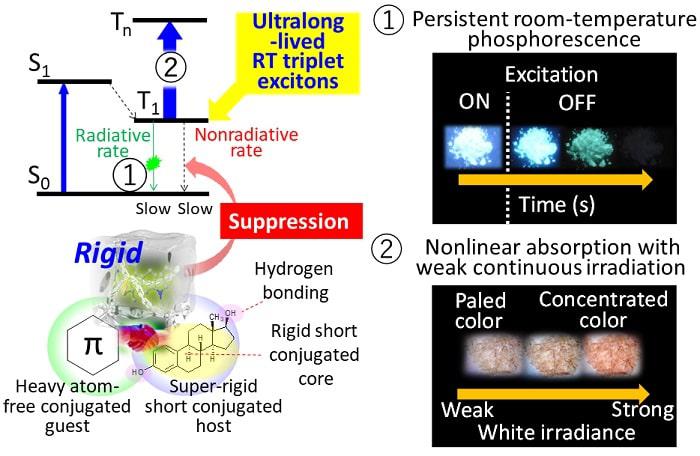
The lifetime of triplet state of molecular materials is generally shorter than 1 ms at room-temperature (RT) because nonradiative deactivation of the triplet state is usually rapid at RT.
Researcher Video Profiles
Jun Shintake, Assistant Professor, Department of Mechanical and Intelligent Systems Engineering
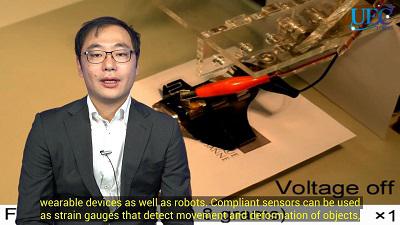
Jun Shintake is developing actuators, sensors, and robots that are made of soft materials. Soft actuators are also known as artificial muscles. These type of actuators can be applied to human assistive wearable devices as well as robots. Compliant sensors can be used as strain gauges that detect movement and deformation of objects, and also be exploited as pressure sensors to measure foot pressure of a person walking, for example.
Naoya Koizumi, Assistant Professor, Media Information Science Course, Department of Informatics
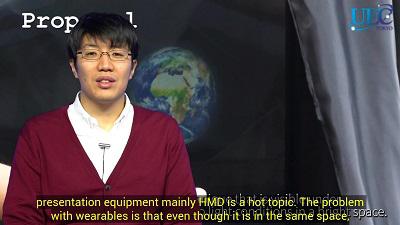
Naoya Koizumi's research is on building digital expression technology for public spaces. He is pursuing information technology to add color to public spaces such as parks and halls, build a new media expression suitable for mature cities to surprise and inspire people.
Shuzo Hirata, Assistant Professor, Graduate School of Informatics and Engineering
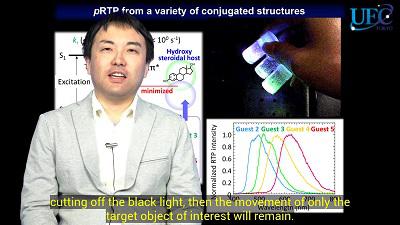
Shuzo Hirata is using molecules for the development of materials that show new types of luminescence and absorption. The absorption of light by a molecule results in the formation of an electron-hole pair inside it. This is referred to as the excited state of the molecule. Usually the lifetime of this excited state is as short as 1 ms or less, but he has succeeded in increasing this to more than one second.
Topics
Advanced group IV materials and their applications for ICT devices
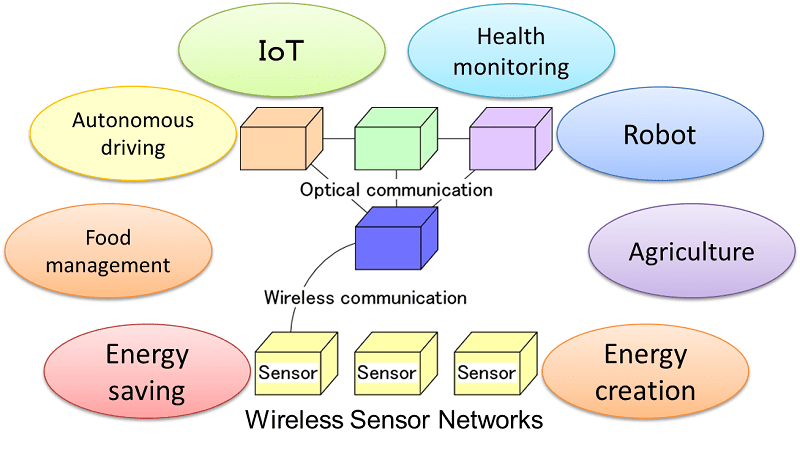
Near-infrared photodetectors on Si substrates have important applications in optical communications on a chip, and GeSn can improve infrared performance. At high Sn content, the Sn segregates causes fluctuations of the Sn content in GeSn layers, which degrades device performance. So there is strong motivation for developing growth techniques and improving the crystallinity of GeSn layers with high Sn content without Sn segregation. Furthermore, understanding physical mechanisms responsible to Sn segregation would clarify growth mechanisms and for the development of growth techniques of GeSn layers with high crystallinity.
News and Events
Report:UEC participated in WUST'S 120th Anniversary Celebration
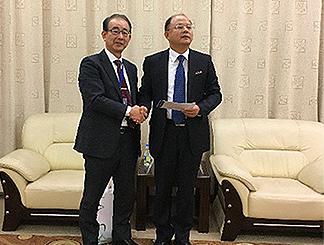
On 26 October, Prof. Abe, the Vice President of UEC, and Assist. Prof. Sasaki visited Wuhan University of Science and Technology (WUST) and attended the 2018 University President Forum and 120th Anniversary Celebration of WUST. Prof. Abe participated in the President Forum as a presenter together with WUST's overseas partners from England, the U.S., Germany, Singapore and others. Prof. Abe started his presentation with congratulatory speech, and then gave introductory presentation of UEC's research and education strategies. In the panel discussion, panelists and audience shared their insights and had active discussion on growing impact of AI on society.
The Irago Conference 2018
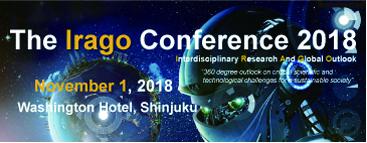
The Irago Conference 2017 was held on 1 November 2018 at the Shinjuku Washington Hotel, Tokyo. The conference was organized by University of Electro-Communications, Toyohashi University of Technology, and Tokai University. This was 8th in this series of conferences providing a platform for networking between scientists, graduate students, and policy makers to interact and share ideas to find solutions for some the major issues of the 21st century.

